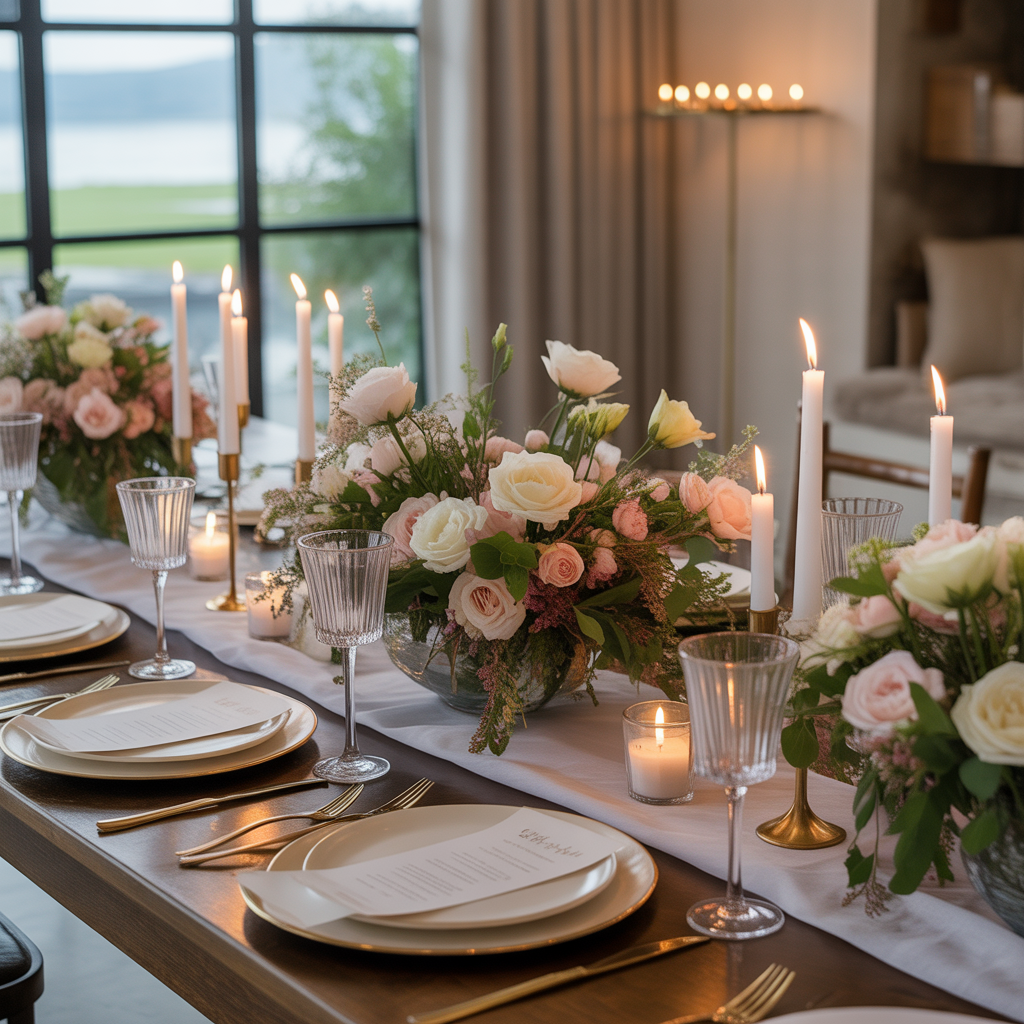How to Plan the Perfect Rehearsal Dinner Menu
Introduction
Planning a rehearsal dinner can be as exciting as the wedding itself. This special gathering serves as a prelude to the big day, allowing close family and friends to celebrate together. Creating the perfect rehearsal dinner menu is essential to ensure that your guests enjoy a memorable meal.
In this guide, we will explore various aspects of menu planning, including definitions, key concepts, examples, and future trends that can help you curate a delicious and enjoyable dining experience.
Definitions
A rehearsal dinner is typically held the night before a wedding, featuring a meal shared by the couple’s families and close friends. It is an opportunity for guests to unwind and bond before the wedding festivities begin.
The menu for this event can vary greatly, influenced by factors such as the couple’s preferences, the venue, and the overall theme of the wedding. Understanding these definitions will help you create a menu that matches the tone of the event.
Key Concepts
When planning a rehearsal dinner menu, consider the following key concepts:
- Theme: The menu should align with the overall wedding theme. Whether it’s rustic, formal, or casual, make sure the food complements the decor.
- Guest Preferences: Be mindful of dietary restrictions and preferences. Offering vegetarian, vegan, or gluten-free options can ensure all guests feel included.
- Seasonality: Opt for seasonal ingredients to enhance freshness and flavor. This can also help in managing costs effectively.
- Service Style: Decide whether you prefer a plated dinner, buffet, or family-style service. Each style creates a different atmosphere and affects guest interaction.
By keeping these concepts in mind, you can create a thoughtful and cohesive menu that resonates with your guests.
Examples of Rehearsal Dinner Menus
Here are a few examples of rehearsal dinner menus that cater to different tastes and styles:
1. Classic Italian Feast
Start with a caprese salad, followed by a choice of chicken parmesan or eggplant rollatini. End with a tiramisu dessert for a sweet finish.
2. Barbecue Bash
Offer a selection of smoked meats, including brisket and pulled pork, accompanied by classic sides like coleslaw and cornbread. Finish with pecan pie.
3. Elegant Seafood Dinner
Begin with a shrimp cocktail, followed by grilled salmon or a seafood pasta. Pair it with a light salad and lemon sorbet for dessert.
4. Vegetarian Delight
Serve a colorful quinoa salad, followed by roasted vegetable lasagna. Conclude with a rich chocolate mousse for a decadent touch.
These examples illustrate how diverse and customizable rehearsal dinner menus can be, allowing couples to reflect their unique tastes.
Pros and Cons of Different Menu Styles
Each menu style has its advantages and drawbacks. Here’s a breakdown of popular options:
Plated Dinner
Pros: Offers a formal dining experience; guests receive a curated meal. Cons: Typically more expensive and requires precise guest counts.
Buffet Style
Pros: Allows for variety; guests can choose their portions. Cons: Can lead to longer wait times and a less formal atmosphere.
Family Style
Pros: Encourages sharing and interaction among guests. Cons: May require more serving space and can be chaotic.
By weighing these pros and cons, you can select a menu style that best fits your vision for the rehearsal dinner.
Case Study: Successful Rehearsal Dinner Menus
One couple opted for a taco bar, allowing guests to customize their meals with various toppings. This informal setup fostered a relaxed atmosphere and encouraged mingling.
Another couple hosted a wine and cheese pairing event, which not only showcased local vendors but also promoted interaction among guests as they discussed flavors and preferences.
These case studies highlight how innovative menu choices can enhance the overall experience of a rehearsal dinner.
Future Trends in Rehearsal Dinner Menus
As dining preferences evolve, so too do rehearsal dinner menus. Future trends may include more plant-based options, interactive dining experiences, or locally sourced ingredients. Couples will increasingly seek unique dining experiences that reflect their personalities and values.
Conclusion
Creating the perfect rehearsal dinner menu requires thoughtful planning and consideration of various factors. By understanding definitions, exploring key concepts, and evaluating different styles, couples can craft a memorable meal that sets the tone for their wedding celebrations.
Ultimately, the goal is to create an enjoyable experience for guests, ensuring that everyone leaves with fond memories before the big day.







